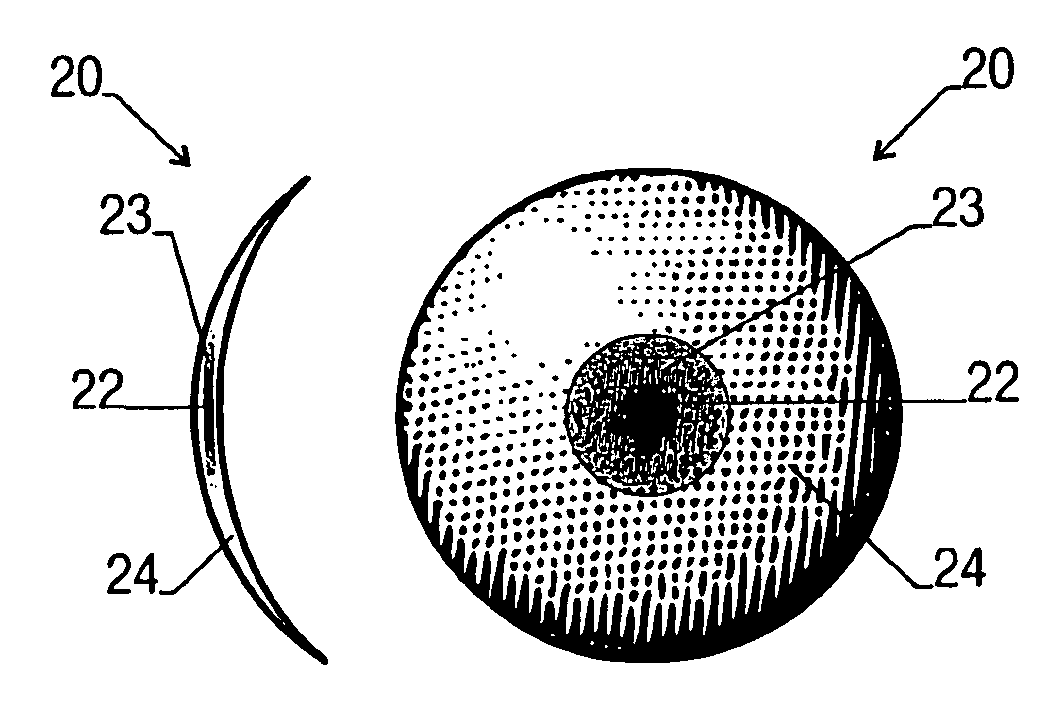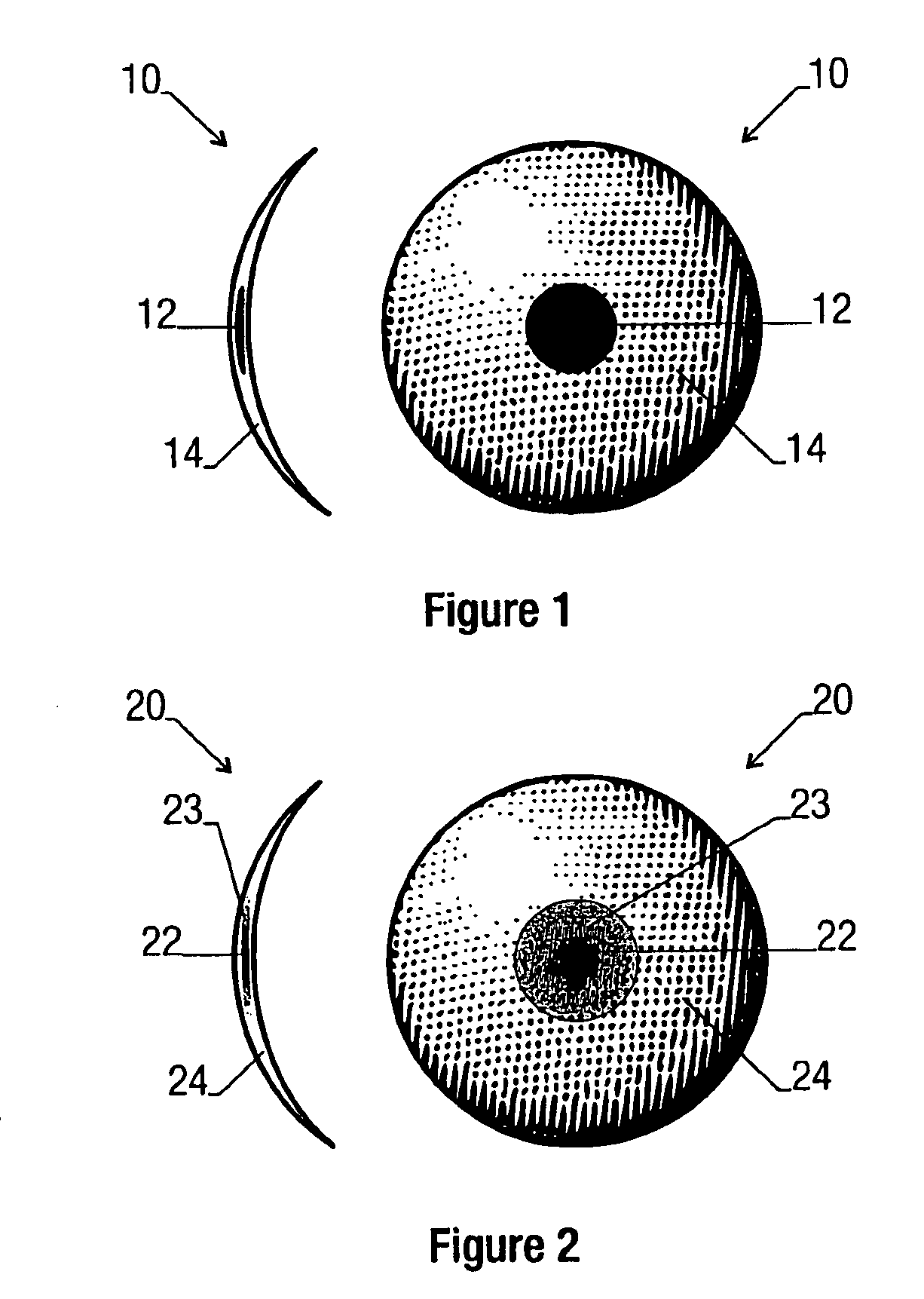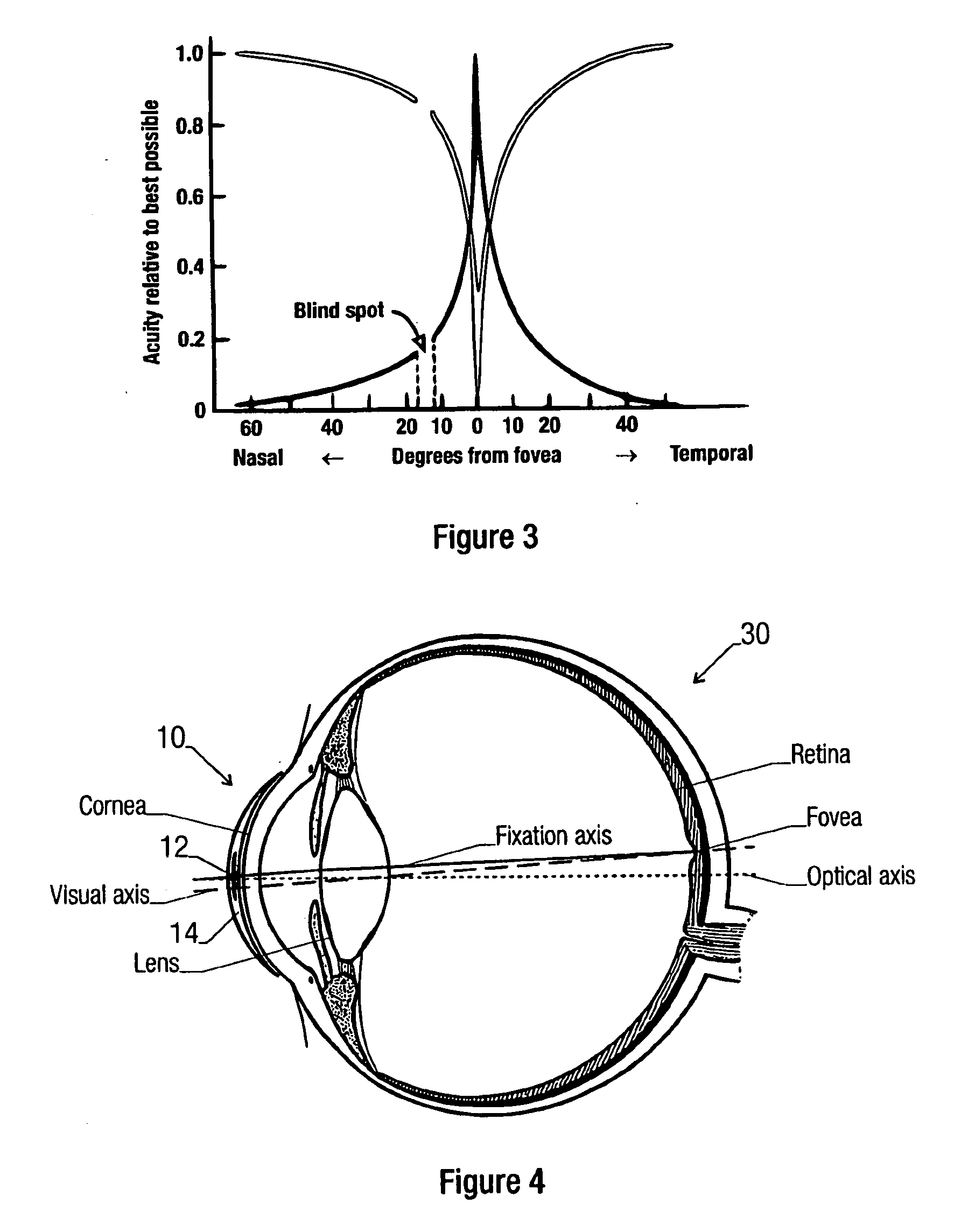Contact lens for treating binocular diplopia
a contact lens and binocular diplopia technology, applied in the field of contact lenses for treating binocular diplopia, can solve the problems of binocular diplopia being particularly severe, motion to become disconjugate, and the like, and achieve the effect of reducing the degree of degradation, reducing the likelihood of the patient, and high degree of light degradation
- Summary
- Abstract
- Description
- Claims
- Application Information
AI Technical Summary
Benefits of technology
Problems solved by technology
Method used
Image
Examples
Embodiment Construction
[0029]The present embodiments represent the best ways known to the applicants of putting the invention into practice. However, they are not the only ways in which this can be achieved.
[0030]The present embodiments will be described with respect to human patients and human eyes.
[0031]It has been found that patients are much less aware of diplopia in the periphery of their field of vision, partly because part of the peripheral visual fields are non-overlapping anyway, but mostly because the spatial resolution of peripheral vision is too low. This is because the properties of the visual receptors change across the visual field: those in the centre, and particularly those in the fovea, have a high spatial resolution and relatively low light sensitivity, whereas those in the periphery have low spatial resolution and high light sensitivity. The difference between the centre and periphery is very marked indeed, as indicated by the black line in FIG. 3. Importantly, the perception of diplop...
PUM
 Login to View More
Login to View More Abstract
Description
Claims
Application Information
 Login to View More
Login to View More - R&D
- Intellectual Property
- Life Sciences
- Materials
- Tech Scout
- Unparalleled Data Quality
- Higher Quality Content
- 60% Fewer Hallucinations
Browse by: Latest US Patents, China's latest patents, Technical Efficacy Thesaurus, Application Domain, Technology Topic, Popular Technical Reports.
© 2025 PatSnap. All rights reserved.Legal|Privacy policy|Modern Slavery Act Transparency Statement|Sitemap|About US| Contact US: help@patsnap.com



